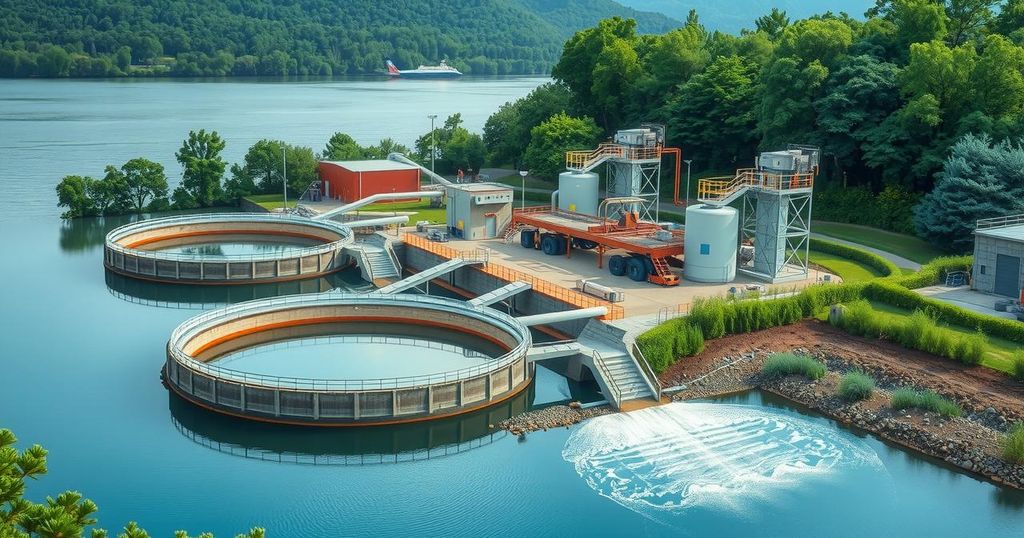Anacortes, Washington Rebuilds Water Treatment Plant to Combat Climate Challenges
Anacortes, Washington, has rebuilt its water treatment plant to enhance capacity and resilience against climate change impacts. The project acknowledged vulnerabilities such as flooding and climate-related risks by integrating various protective measures and utilizing EPA resources. The total cost was $56 million, ensuring the facility meets future demands while serving as a model for other communities facing similar issues.
The city of Anacortes, Washington, has undertaken a significant reconstruction of its water treatment plant situated along the Skagit River, which serves a population of 56,000. Recognizing the plant’s susceptibility to flooding and future climate-related risks, Anacortes decided to increase the facility’s capacity from 21.4 million gallons per day (mgd) to 31.5 mgd. Although relocating the plant out of the floodplain was considered, it was deemed too costly in 2008, prompting officials to rebuild on the existing site while incorporating climate adaptation strategies.
In collaboration with non-profit organizations, Anacortes officials assessed the current climate science to understand the potential impacts on the plant’s location, considering several climate risks including increased storm intensity, saltwater intrusion, and heightened sedimentation levels. Projections through the year 2080 addressed the expanded 100-year floodplain, a threefold increase in winter peak suspended sediment load, and the anticipated movement of saltwater upstream due to sea level rise.
To address the identified vulnerabilities, the design and construction of the new facility involved several measures. These included minimizing building penetration below the current 100-year flood elevation, elevating critical electrical equipment to safer levels, and implementing waterproofing techniques. Additionally, ring dikes were designed to provide flood protection, investing a total of $56 million in these improvements enhances the facility’s capability to meet increasing service demands alongside anticipated climate changes.
To facilitate this project, the Environmental Protection Agency (EPA) provided various tools. The Coastal Inundation Toolkit enables utilities to explore potential sea level rise and storm surge effects, while the Creating Resilient Water Utilities Adaptation Strategies Guide offers low-cost adaptation strategies for inclusion in planning. The Climate Resilience Evaluation and Awareness Tool (CREAT) assists in vulnerability assessments and identifies research needs to better understand the concerns surrounding climate impact.
Similar instances of community adaptation efforts are pointed out, including the case of Manchester-by-the-Sea, Massachusetts, which analyzed sea level rise impact, and Iowa City, Iowa, which opted to relocate a vulnerable facility. Moreover, Washington, D.C.’s strategies to mitigate flooding threats through green infrastructure could serve as additional models for other communities to consider.
This successful initiative demonstrates Anacortes’ proactive measures in reinforcing infrastructure security against climate change while effectively planning for future community water service demands, providing a model for other municipalities facing similar challenges.
The reconstruction of the Anacortes water treatment plant exemplifies a proactive approach to climate resilience by addressing vulnerabilities associated with flooding and future climate risks. Through the strategies implemented and collaboration with various organizations, Anacortes is not only preparing for increased service demands but also setting a critical example for other communities that face similar environmental challenges. The usage of EPA tools further facilitates a comprehensive understanding of climate impacts, underscoring the importance of such approaches in contemporary urban planning.
Original Source: www.epa.gov




Post Comment